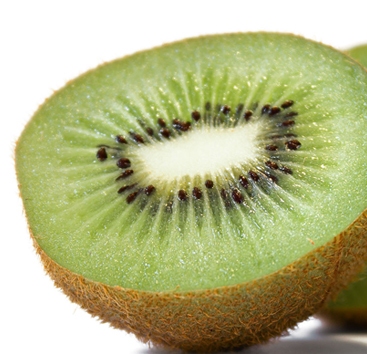Kiwi is enjoyed more for the novelty of eating this exotic fruit rather than its flavor. With its vivid green flesh that is speckled with tiny, black, edible seeds, the kiwifruit certainly adds a colorful touch to any dish.
Sadly, though, kiwi does not go well with many other ingredients. It does make an excellent addition to a fruit salad. Throw them in with fresh strawberries and honeydew melons and pour on top of it some Chardonnay Sabayon. You have a light, refreshing dessert in your hands that will take no more than 20 minutes to put together.
Kiwi is often referred to as Chinese gooseberry. The Actinidia deliciosa is home to China. In Taiwan and Hong Kong, it’s called “qíyì guǒ”, which translates into strange fruit. An apt name, surely. This tiny odd ball of a fruit shares similarities with the citrus family, while the fuzzy peach can also be considered as a distant cousin.
Kiwi is also a key ingredient in New Zealand’s national dessert, the pavlova where it combines beautifully with delicious whipped cream.
Health wise, the kiwifruit has a lot going for it. The University of Oslo recently conducted a study on the benefits of consuming kiwi daily. The results showed that eating two to three of them every day for 28 days will greatly reduce platelet aggregation and blood triglyceride levels. This acts as a natural blood thinner and can possibly diminish the risk of blood clots. The source of these omega -3 fatty acids and vitamin E is in the seeds. So make sure that you don’t throw them away.
Kiwi is a rich source of vitamin C which works as a treatment towards neurodegenerative diseases like Alzheimer’s disease and Parkinson’s disease. It’s also wiser to eat the kiwi with the skin intact. The skin carries a high amount of dietary fiber and flavonoid antioxidants.

